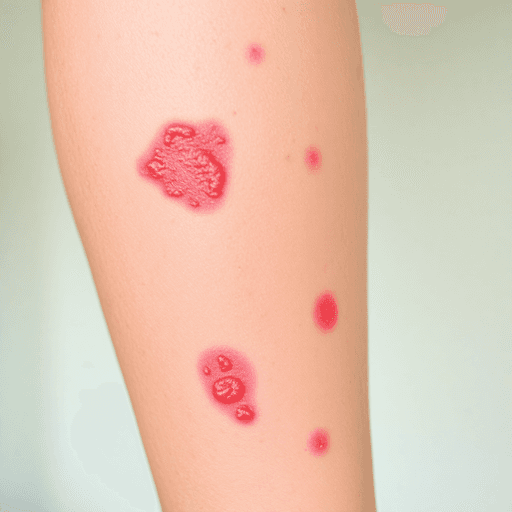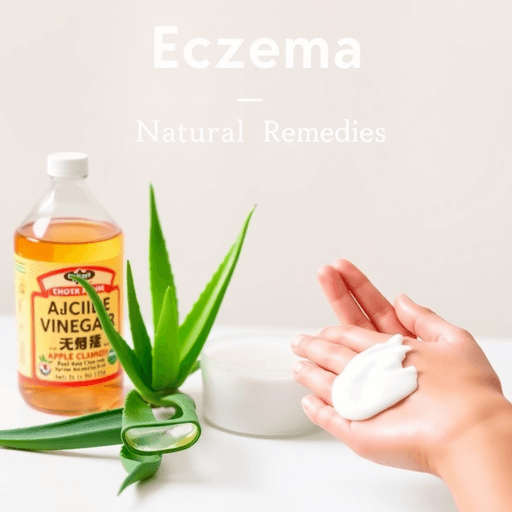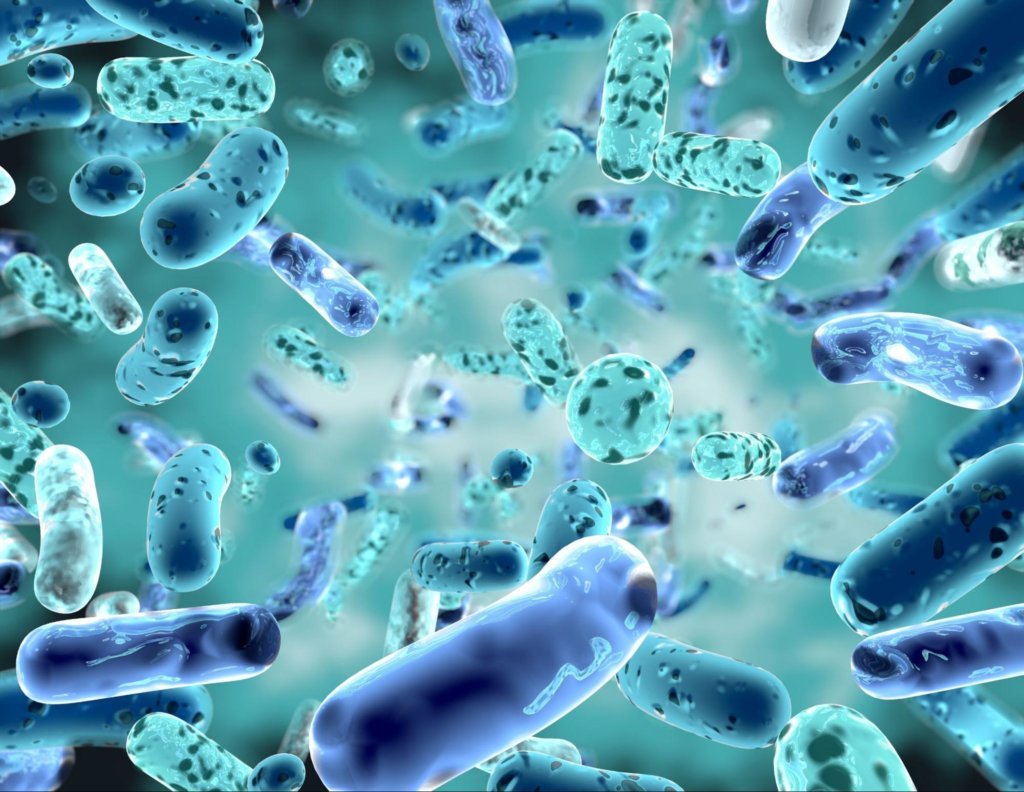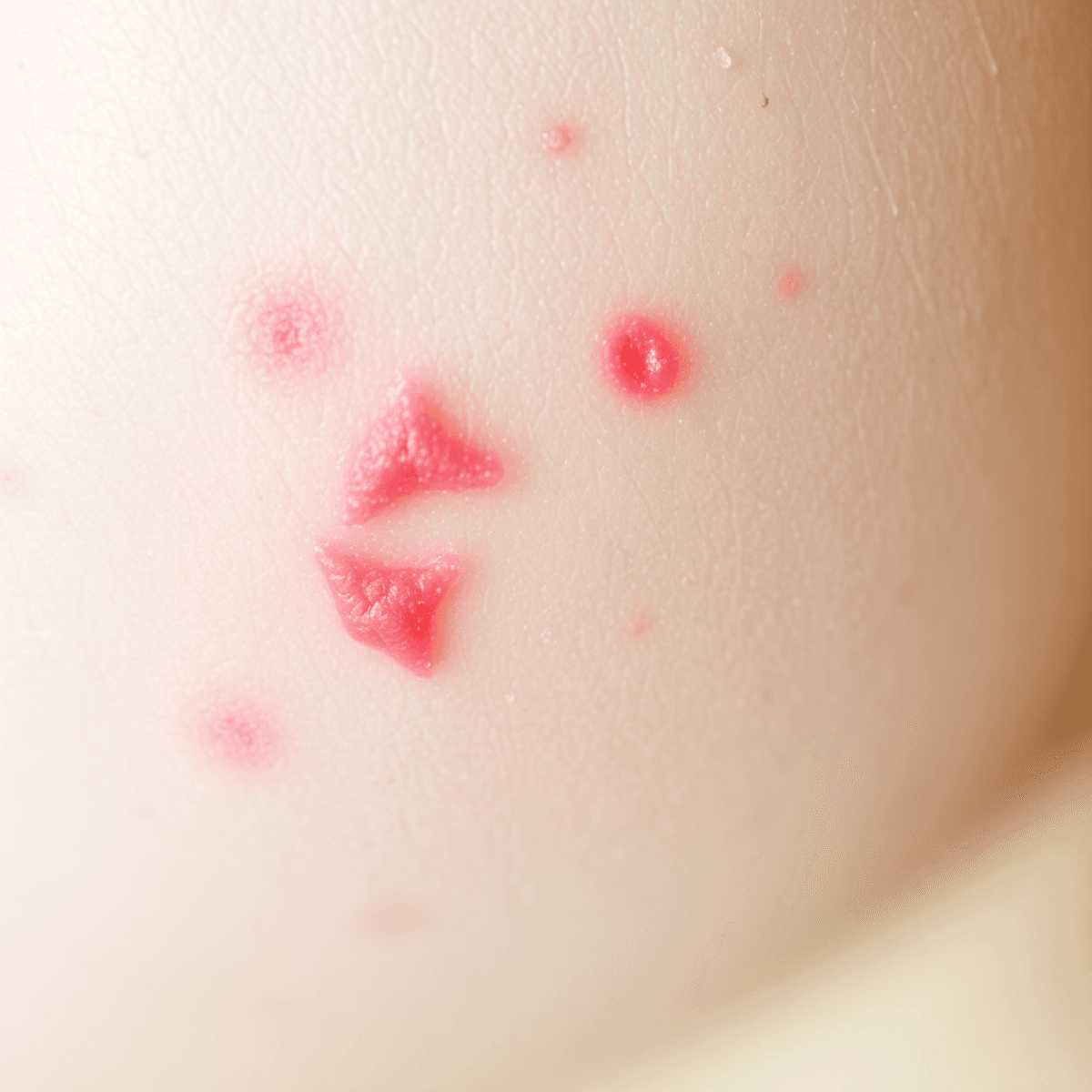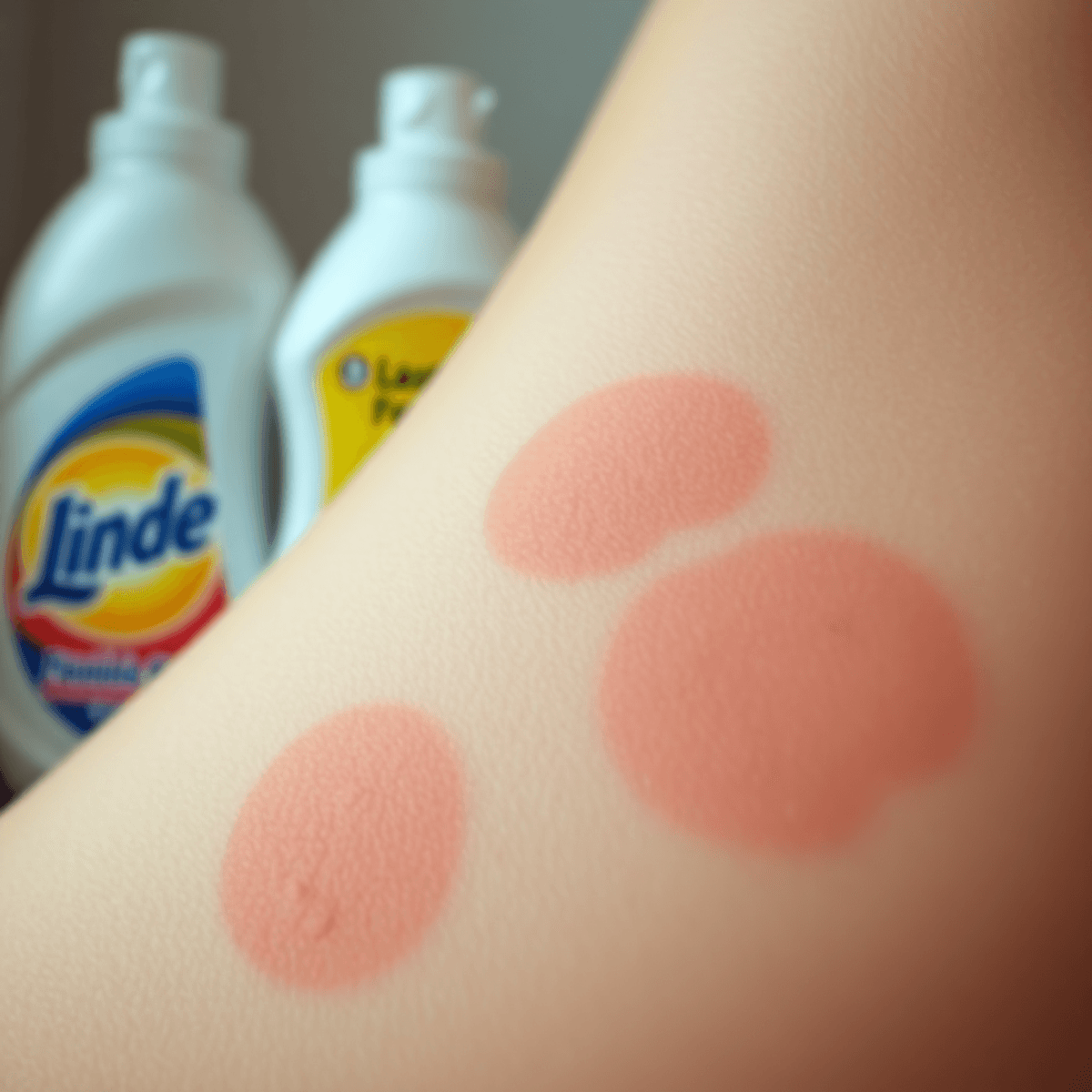Weeping Eczema: Causes, Symptoms, and Effective Treatments

Introduction
Living with weeping eczema can be a challenging experience, affecting not just the skin but also an individual's overall quality of life. This condition, characterised by blisters that ooze clear fluid or pus, often leads to discomfort and emotional distress. Understanding the causes and treatments of weeping eczema is crucial for effective symptom management and improving daily life.
This article serves as a comprehensive guide to help you navigate the complexities of oozing eczema. Delve into the underlying factors contributing to this condition, explore various treatment strategies including the use of all-natural ingredients that can nourish and enhance your skin's natural health, and learn how to identify symptoms early on. By equipping yourself with knowledge about what weeping eczema looks like and how to treat it, you can take proactive steps towards better skin health.
Understanding Weeping Eczema
Eczema presents itself in various forms, each with unique characteristics, and weeping eczema is no exception. This condition is often marked by blisters that ooze or leak fluids, a symptom that can appear in several types of eczema. Understanding these different types can help you identify and manage the symptoms more effectively.
Types of Eczema
1. Atopic Dermatitis
- Prevalence: The most common form of eczema, affecting millions in the United States alone.
- Causes: It stems from an overactive immune system and a deficiency in certain proteins within the skin barrier.
- Symptoms: Characterised by inflamed, itchy skin which may develop into weeping sores when exacerbated. For relief from such symptoms, this eczema cream could be beneficial.
2. Nummular Dermatitis
- Appearance: Known for its distinctive round, disc-shaped lesions.
- Affected Areas: Commonly affects the lower legs, abdomen, arms, hands, and fingers.
- Weeping Symptoms: These lesions can evolve into blisters that ooze or weep, adding to discomfort.
3. Dyshidrotic Dermatitis
- Affected Areas: Primarily impacts the hands and feet.
- Demographics: More prevalent among women.
- Symptoms: Starts as a rash with painful blisters on the sides of fingers; these eventually lead to peeling skin that may become infected.
Each type involves unique challenges but shares common ground in the potential for weeping symptoms. Recognising these symptoms early can lead to more effective management strategies, reducing the impact on your daily life.
The journey to understanding begins with recognising the specific type you are dealing with, paving the way for tailored treatment options and lifestyle adjustments to soothe this often distressing condition. For instance, using a specialised body wash designed for eczema can provide some comfort. Additionally, exploring various treatment options available online may also prove helpful in managing this condition effectively.
Causes and Symptoms of Oozing Eczema
Several factors contribute to the development of weeping eczema, with the immune system playing a significant role. An overactive immune response often triggers eczema, leading to inflammation and subsequent skin irritation. This exaggerated immune activity can be worsened by various external factors such as allergens (e.g., pollen, pet dander) and irritants (e.g., harsh soaps, detergents). These triggers provoke flare-ups, resulting in the characteristic symptoms of eczema.
Role of Staphylococcus aureus
Staphylococcus aureus is a common bacterium that poses an infection risk for individuals with weeping eczema. When skin integrity is compromised by eczema lesions, this bacterium can infiltrate and worsen symptoms, potentially leading to more severe infections. The presence of Staphylococcus aureus often leads to increased redness, warmth, and pus formation around the affected areas.
Symptoms of Oozing Eczema
Weeping sores are a hallmark of this condition. They typically emerge as blisters filled with clear fluid or pus due to skin inflammation. These sores can burst, leaving behind raw and tender patches that may become crusted over time. Alongside these weeping sores, you might experience other symptoms common in eczema cases:
- Itchiness: A persistent urge to scratch the affected area, which can worsen the condition.
- Dryness: Accompanying dryness often leads to cracked and scaling skin.
- Redness: Inflamed skin appearing red or darker than your usual complexion.
Eczema with blisters not only causes physical discomfort but also affects emotional well-being due to its visible nature and potential complications. Understanding these causes and symptoms can be crucial in managing the condition effectively. Recognising signs early allows for more timely intervention and reduces risks associated with infections or severe flare-ups.
Treatment Options for Weeping Eczema
Managing weeping eczema effectively requires a combination of medical interventions and consistent skincare practices. Understanding the available treatment options can significantly alleviate symptoms and improve quality of life.
Medical Interventions
- Antihistamines: These medications are commonly used to relieve the intense itch associated with eczema. By blocking histamine, a substance in the body that causes allergic symptoms, antihistamines can reduce discomfort and help prevent further skin damage from scratching.
- Biologics: For severe cases of weeping eczema, biologics present a modern treatment approach. These are injectable medications designed to target specific parts of the immune system, helping to control inflammation and reduce symptoms more effectively in patients who do not respond to conventional treatments.
- Topical Steroids: These are often prescribed for localised control of inflammation and itching. Available in various strengths, topical steroids work by reducing skin inflammation and suppressing the immune response, making them a staple in eczema management.
- Systemic Medications: When eczema is widespread or particularly severe, systemic medications may be necessary. These include oral immunosuppressants which help manage symptoms by dampening the overall immune system activity.
Skincare Routine for Eczema
A daily skincare routine is crucial in managing weeping eczema effectively:
- Emollients and Moisturisers: Keeping the skin well-moisturised helps repair the skin barrier and prevent moisture loss. Look for products specially formulated for sensitive skin or those containing ingredients like ceramides that support barrier function.
- Applying moisturisers immediately after bathing can lock in moisture, while emollients soothe inflamed skin and provide a protective layer against irritants.
Additional Considerations
For those dealing with weeping sores, understanding what it looks like and how to treat oozing is vital. The use of wet wraps, for example, can be beneficial. This involves wrapping affected areas with bandages soaked in water or medicated solutions like aluminium acetate (Domeboro) after applying topical treatments, which helps soothe the skin and reduce oozing by providing a cooling effect.
By combining these treatment strategies with ongoing monitoring by healthcare professionals, individuals with weeping eczema can find relief and manage flare-ups more effectively.
In addition to these strategies, exploring natural remedies might also provide some relief. For instance, effective pain relief and management could be achieved through certain products designed to offer lasting relief from discomfort associated with eczema flare-ups. Furthermore, specific back pain relief products could also assist if the condition leads to additional physical strain or discomfort.
Advanced Therapies and Infection Management Strategies
For those struggling with the ongoing challenges of weeping eczema, advanced therapies offer additional options for relief. Phototherapy emerges as a promising option, using controlled exposure to ultraviolet light to reduce inflammation and itchiness. This method may be particularly beneficial for individuals who haven't found success with traditional treatments.
Another innovative approach is wet-wrap therapy, which involves applying medication followed by wrapping the affected area with dampened cotton bandages. This technique helps manage skin weeping, especially in cases of atopic dermatitis, by enhancing the absorption of topical treatments and offering immediate soothing relief.
Identifying signs of infection in oozing eczema is crucial. Symptoms such as increased redness, warmth, swelling, or pus may indicate an infection that often results from the presence of Staphylococcus aureus bacteria. In such cases, seeking timely medical intervention becomes imperative. Antibiotics for infected sores are commonly prescribed to combat bacterial infections effectively, preventing further complications.
These therapies, when combined with vigilant skincare routines and proactive management strategies, can significantly enhance the quality of life for those affected by weeping eczema. Exploring these options under professional guidance ensures a comprehensive approach to managing this challenging condition.
Preventing Flare-Ups & Seeking Support from the Community
Identifying Triggers
Identifying triggers is crucial in managing eczema flare-ups. Common triggers include allergens, irritants, stress, and changes in weather conditions. Maintaining a diary to track flare-ups can help pinpoint specific factors that worsen symptoms. Once identified, avoiding these triggers becomes key to preventing eczema infections and managing outbreaks.
Importance of Hydration
Hydration plays a significant role in skin health. Regular use of emollients and moisturisers is essential to keep the skin barrier intact and reduce the risk of weeping eczema episodes. Opt for hypoallergenic products free from fragrances and dyes to minimise irritation. Additionally, using a humidifier in dry environments can maintain skin moisture levels.
Seeking Professional Guidance
Seeking professional guidance is invaluable for those with weeping eczema. Dermatologists can offer tailored treatment plans and recommend appropriate medications or therapies. They also provide advice on effective skincare routines that suit individual needs.
Engaging with Community Support
Engaging with community support networks provides emotional comfort and practical advice. Platforms like MyEczemaTeam connect you with others who understand the challenges of living with eczema. Sharing experiences and tips within such communities fosters a sense of belonging and support.
By combining these strategies—identifying triggers, maintaining hydration, seeking professional help, and connecting with supportive communities—you create a robust approach to managing weeping eczema effectively. This comprehensive strategy not only alleviates symptoms but also enhances quality of life for those affected by this challenging condition.
Conclusion
Living well with weeping eczema is possible by understanding its complexities and embracing effective management strategies. Recognising what weeping eczema looks like, along with knowing how to treat oozing symptoms, can significantly enhance your quality of life. Consistent skin care routines, awareness of personal triggers, and utilising professional resources lead to better control over this condition. Engaging with community support networks provides essential emotional strength and shared experiences.
In addition to these strategies, exploring the power of natural health can also be beneficial. Always remember, despite the challenges, you are not alone in this journey towards healthier skin.
FAQs
What is weeping eczema?
Weeping eczema, also known as oozing eczema, is a skin condition characterised by the presence of weeping sores. It can be challenging to manage and often requires a combination of treatments and lifestyle adjustments.
What are the main types of eczema associated with weeping symptoms?
The main types of eczema that may present with weeping symptoms include Atopic Dermatitis, Nummular Dermatitis, and Dyshidrotic Dermatitis. Each type has unique characteristics and affected areas.
What causes weeping eczema?
Several factors contribute to the development of weeping eczema, including environmental triggers, skin irritants, allergens, and infections such as those caused by Staphylococcus aureus, which can exacerbate the condition.
What are the common symptoms of weeping eczema?
Common symptoms of weeping eczema include the presence of weeping sores, intense itching, redness, swelling, and crusting on the affected areas. These symptoms can significantly impact daily life.
How can I effectively treat weeping eczema?
Effective treatment for weeping eczema typically involves a combination of medical interventions such as antihistamines for itch relief, a consistent skincare routine to keep the skin hydrated, and advanced therapies if necessary. Identifying triggers and engaging in community support can also be beneficial.
Why is hydration important for managing weeping eczema?
Hydration plays a significant role in maintaining skin health. Regular use of moisturisers helps prevent dryness and reduces flare-ups associated with weeping eczema. Keeping the skin well-hydrated can improve overall comfort and appearance.


